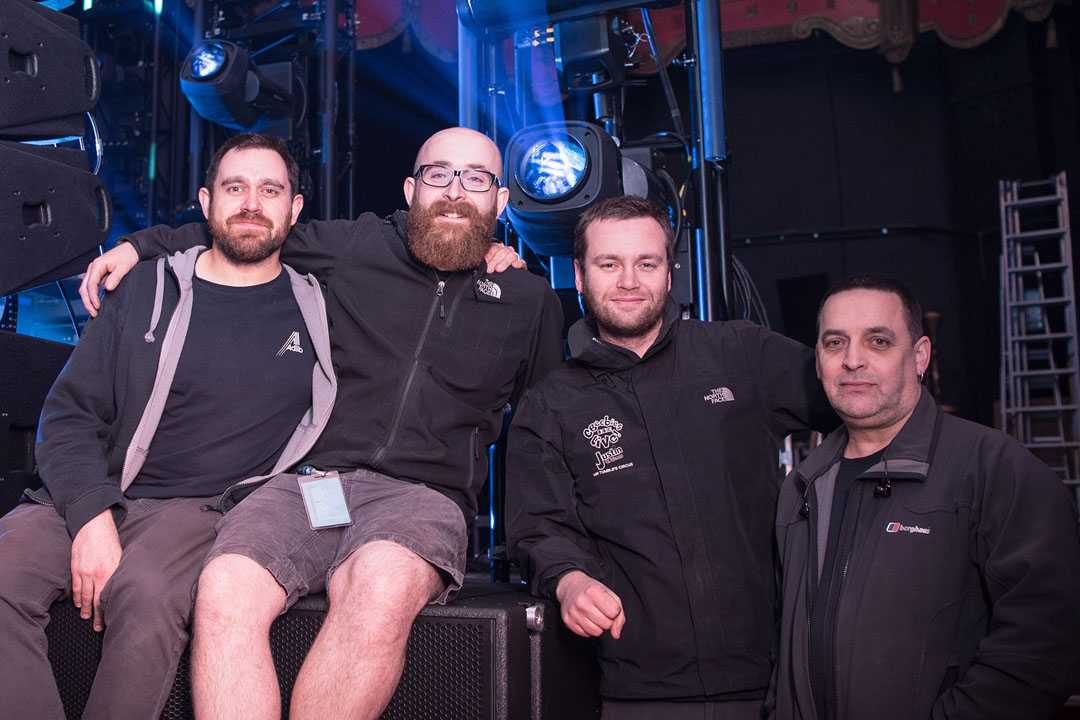Adlib sparks up for Enter Shikari tour
- Details

During the initial stages of the tour design, Andy Russell (FOH) wanted to specify a system that would push boundaries in audio fidelity. He wanted to connect the massive energy emanating from the stage to Shikari’s devoted fan base. So, hand-on-heart, Adlib systems engineers George Puttock and Sam Proctor together with Adlib account manager and director Dave Jones all recommended Coda AiRAY as the right option.
They specified the system - known for its low distortion, extreme output and intense clarity - based on Andy’s brief of delivering a truly stunning live experience for anyone catching the tour.
Andy has worked with Enter Shikari for the last 11 years and knows exactly how they and he like it to sound - raw, powerful, intricate and detailed - all in the same breath. He aims to achieve a big, bold sound with lots of creative effects to accompany the all-important volume and sub bass.
They were initially inspired to go down the quad route by Roger Waters Dark Side of the Moon surround sound performance at Coachella in 2008. It was a technique they utilised on the last arena tour (February 2016) which was also serviced by Adlib and system engineered by Sam Proctor.
However, for this tour, they took a much bolder quad approach.
The desire was to completely immerse the audience in the sound and wrap them up in an exciting sonic journey. The goal was to make the vast arena spaces appear just as intimate and charismatic as a sweaty 300-person underground club with condensation dripping off the ceiling.
Numerous effects from Shikari’s new album The Spark were automated, so they could be bounced around the room, bringing a truly immersive experience to the fans.
The typical Coda system comprised of a 12-deep AiRAY hang per side with four ViRAY as down-fill. Flown behind the AiRAY were typically six SC2 LF extensions per side. These double 15” enclosures overlap the double 12”s of the AiRAY in the 40 – 160 Hz range, adding immense punch & weight to the already meaty AiRAY cabinet.
The SC2 cabinet is from the same family as AiRAY, so George was able to sometimes fly them elsewhere in the hangs if needed, like on another tour which recently played Brixton, where they were slipped into the middle of the array to avoid hitting the balcony with the AiRAY, whilst keeping one single line source of LF in the air.
On the floor, 20 of Coda’s Sensor Controlled SCP-F dual 18” Subs were placed in a horizontal line. Three of Coda’s new array-able point source (APS) speakers were used per side for infill in conjunction with four high-output point source (HOPS) cabinets.
The rear speaker hangs providing the quad coverage comprised of eight ViRAY speakers in each corner. A truss was flown between these hangs to run the cables to FOH, where they were powered by Coda’s Linus Amplified Controllers.
Audio was transported from the Midas PRO X at FOH to the Coda amplifiers digitally & completely latency free with Coda’s proprietary LiNET Redundant Signal Distribution System.
“I can now honestly say that Coda is the best PA I have ever mixed on,” stated Andy as the UK run ended, clearly impressed with what could be achieved with such a compact set of loudspeakers.
Monitor engineer Joe Crouch worked with Adlib technician Kleiner on stage using one of Adlib’s Soundcraft Vi3000 consoles and the band’s own IEM system. With most inputs DI’d into the line system, it was a clean and quiet stage on which Andy and Joe could let loose their creativity.
(Jim Evans)
















